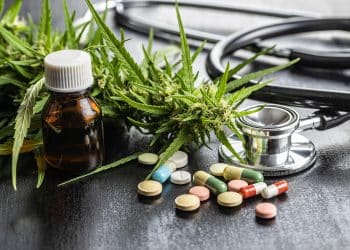Roots have been a somewhat overlooked part of the cannabis/hemp plant, even though they have been used to treat fever, infections, inflammations, and arthritis throughout history. [1]
Moreover, hemp roots are rich in pentacyclic triterpenoids like friedelin, epifriedelinol, and β-amyrin, which have anti-cancer, anti-inflammatory, antioxidant, analgesic, and antiviral properties. Even so, roots are normally counted as waste.
Extraction Process
Extraction of triterpenes from cannabis roots with ethanol, ethyl acelate, n-hexane, and petroleum ether have been the methods normally discussed, but for the first time, a new study [1] brings supercritical carbon dioxide (CO2) extraction into the conversation.
The study used three organically grown hemp chemovars: Futura 75 (France), Felina 32 (France), and Uso 31 (Netherlands).
The researchers performed supercritical CO2 extraction (using a Jasco system) for 2 hours at 20 MPa (200 bar), 60 °C, and 3 mL/min. Ethanol at 10% by volume was added as a co-solvent. They also conducted two conventional extractions (for comparison) with ethanol and n-hexane for 3 hours at room temperature under magnetic stirring. They analyzed the extracts with gas chromatography (GC) coupled with a flame ionization detector (FID).
The Compounds in Roots
The scientists identified 20 secondary metabolites, notably:
- Triterpenes;
- Phytosterols;
- Aliphatic compounds;
- β-amyrone;
- Glutinol;
- Fucosterol;
- Stigmastanol;
- Stigmasta-3,5-diene;
- Stigmasta-3,5,22-triene;
- And oleamide.
The juxtaposition of conventional and CO2 extraction methods didn’t bring out stark differences for epifriedelinol, but supercritical CO2 resulted in lower yields of friedelin. The authors noted that extraction conditions can therefore “be further optimized for a dual extraction,” specifically by increasing temperature and pressure. Even so, they considered the extraction yields of phytocompounds “comparable.”
Antioxidant Activity
Antioxidant activity varied and seemed to depend on chemovar and harvest time. The Felina 32 variety was significantly higher in friedelin compared to the other two varieties. There was no relationship between triterpene content and antioxidant power, however, suggesting that phytosterols play an important role in this regard.
Air drying showed the ability to preserve both epifriedelinol and friedelin in the roots. Drying at higher temperatures and extended storage negatively affected triterpene content, however.
Overall, cannabis roots can provide “added value” to growers. [1]
Reference:
- Kornpointner C, et al. Chemical composition and antioxidant potential of Cannabis sativa roots. Industrial Crops and Products. 2021;165(113422). Impact Factor = 4.244, Times Cited: n/a
Image Credit: Gekko93, flickr, CC BY-NC-SA 2.0











